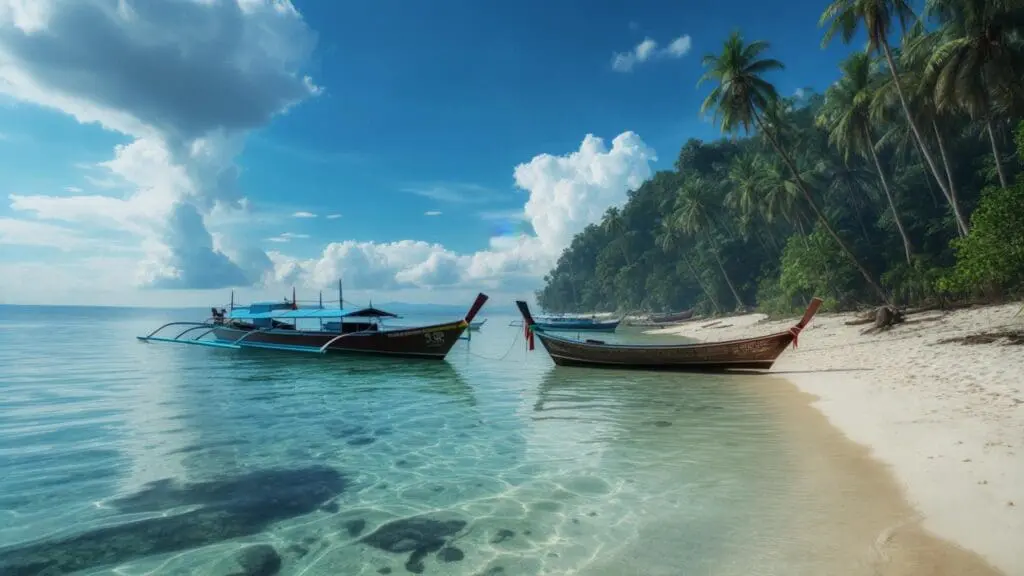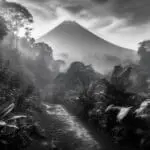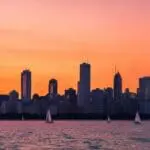Okay, let’s be real – the Philippines has over 7,000 islands, and trying to pick where to go is absolutely mind-boggling. I remember staring at my laptop screen for hours, completely overwhelmed by Pinterest boards of seriously gorgeous beaches, emerald rice terraces, and crystal-clear lagoons. I’ll be honest – I totally screwed up my first Philippines trip by trying to cram way too much into 10 days. I spent more time in airports than on beaches, and I was exhausted by day three.
Avoid the same mistake — plan a Philippines trip that actually makes sense with our Vacation Planner.
Quick Resources:
-
Plan your perfect island-hopping itinerary in minutes with our Vacation Planner
-
Explore more trip and celebration tools at All Wedding Tools
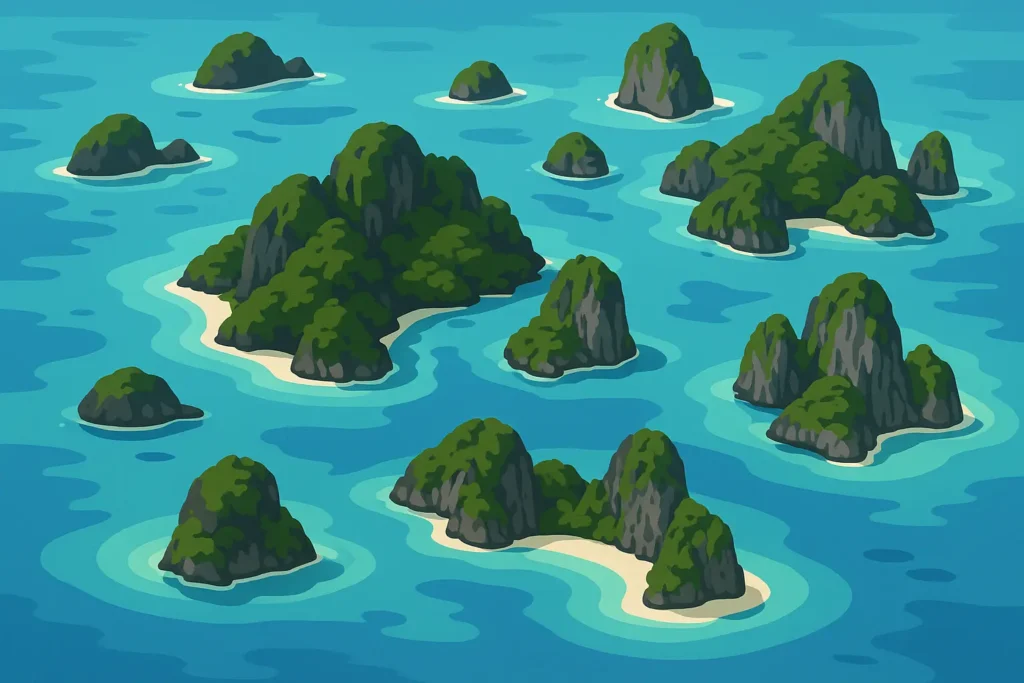
According to travel experts at Bucket List Bums, “there are (technically) more than 7,000 islands in this part of Southeast Asia, and the list of Pinterest-worthy beaches, sandbars, dive sites, waterfalls, lagoons and rice terraces is never-ending.” This reality hit me hard during my research phase, but it also sparked the creation of this guide that I wish I’d had back then.
Here’s what I’ve learned after multiple trips and way too many planning mistakes: you need a solid philippines itinerary that actually makes sense. I’m talking about 25 carefully crafted routes that won’t leave you feeling like you need a vacation from your vacation. From backpacker adventures on a shoestring budget to luxury beach escapes where someone brings you cocktails, these philippines itinerary options eliminate the guesswork and turn your Philippines dreams into actual doable plans.
Ready to stop guessing? Build your own customized Philippines itinerary today with our Vacation Planner.
Whether you’re planning a destination wedding celebration (more on that later) or just want to explore solo without losing your mind, these itineraries cover every travel style, budget, and timeline. Each philippines itinerary addresses real challenges like flight connections, weather timing, and budget reality checks while ensuring you experience the authentic magic that makes this archipelago unforgettable.
TL;DR
Look, if you just want the basics: 7-10 days works for highlights, but 14+ days lets you actually relax and explore without rushing. Dry season (December-May) has perfect weather but costs more and gets crowded. You can survive on $30-50/day if you’re okay with hostels and street food, or live it up for $200+/day. Fly into Manila, Cebu, or Palawan for the best connections, and book everything months ahead if you’re traveling during peak season. Oh, and be honest about your fitness level – some of these adventures will kick your butt.
Key Considerations for Smart Philippines Travel Planning
Planning a successful philippines itinerary isn’t rocket science, but there are six things that will make or break your trip. How long you’ve got determines everything else – short trips need laser focus while longer stays let you actually breathe and explore. Weather affects your wallet as much as your comfort, budget reality determines whether you’re staying in hostels or resorts, and getting around varies wildly depending on where you want to go. Your fitness level matters more than you think, and booking strategy becomes crucial when everyone else wants to visit the same Instagram-famous spots.
From timing to transport, our Vacation Planner simplifies every part of your travel planning.
Duration and Time Allocation Strategy
Here’s the truth: your vacation days are precious, so don’t waste them sitting in airports. If you’ve only got 7-10 days, pick 2-3 places max. I don’t care how tempting that fourth island looks on Instagram – you’ll thank me later when you’re not exhausted from constant travel.
I’ve watched countless travelers burn through their entire vacation sitting in ferry terminals instead of enjoying those beaches they flew halfway around the world to see. Two weeks hits the sweet spot for most people. You’ve got enough time for real experiences without feeling like you’re constantly packing and unpacking.
If you’re lucky enough to have 14+ days, that’s when the Philippines really opens up. You can hit those remote spots that require complicated travel, take spontaneous detours, and actually get to know the local culture instead of just taking selfies with it.
| Trip Duration | Realistic Destinations | How You’ll Get Around | Perfect For |
|---|---|---|---|
| 7-10 days | 2-3 major spots | Flights only (trust me) | First-timers, limited vacation time |
| 10-14 days | 3-4 destinations | Mix of flights and ferries | Most people, honestly |
| 14+ days | 4+ including off-the-beaten-path | Everything – buses, boats, flights | Adventure seekers, digital nomads |
Seasonal Weather Patterns and Their Impact
The Philippines has three seasons, and picking the wrong one can seriously mess up your trip. Dry season (December-May) is when everyone wants to go – perfect beach weather, but you’ll pay premium prices and deal with crowds everywhere.
Wet season (June-November) gets a bad rap, but here’s the thing: you’ll save money and have places mostly to yourself. Sure, it might rain, but tropical storms are usually quick and dramatic rather than all-day drizzles. Just don’t plan outdoor adventures during typhoon season unless you enjoy disappointment.
Cool dry season (December-February) is the golden window. Comfortable temps, minimal rain, and you can actually sleep without air conditioning cranked to arctic levels. But everyone knows this, so expect higher prices and book everything early.
Budget Considerations Across All Categories
Let me break this down real simple: If you’re eating street food and staying in hostels, you can get by on about $30-50 a day. The street food in Manila is incredible, but trust me – start slow unless you want to spend your first day glued to the bathroom.
Want actual air conditioning and restaurants where you can read the menu? You’re looking at $75-150 daily. This is the sweet spot for most travelers – comfortable without going broke.
And if you want to live it up with resort pools and room service? Yeah, that’s $200+ territory. But sometimes you just want a cold beer, reliable WiFi, and a massage on the beach without having to rough it, and there’s nothing wrong with that.
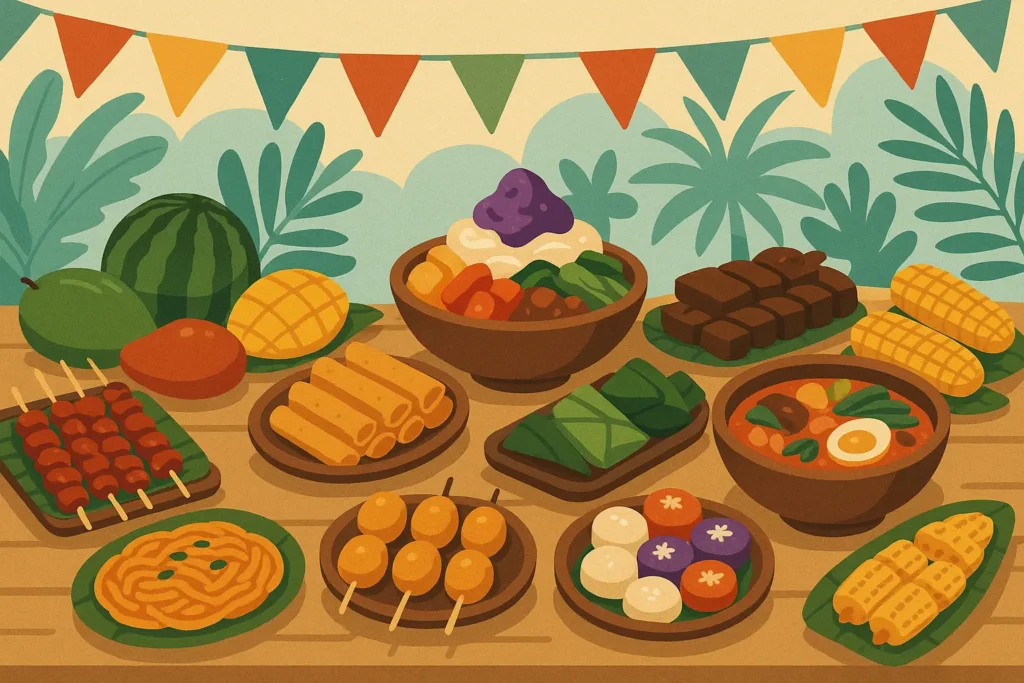
Transportation Infrastructure Reality Check
Here’s what nobody tells you about getting around the Philippines: it’s not as simple as those travel blogs make it sound. Major hubs like Manila, Cebu, and Puerto Princesa have decent flight connections and you can usually figure things out. These should be your anchor points, especially if you’re short on time.
Remote destinations are a different story entirely. Getting to places like Siquijor or those rice terraces in Banaue can eat up entire days of travel. Multiple buses, boats, and a lot of patience required. Great for longer trips, but don’t try to squeeze them into a week-long vacation.
Domestic flights cost $50-200 per hop, which might sound reasonable until you’re booking four of them. Pro tip: Those cheap flights? Book them the second you know your dates. I learned this the hard way when a $60 flight became $180 because I waited “just a few more days” to book.
Don’t let last-minute chaos derail your trip — organize your flights, stays, and routes easily with our Vacation Planner.
Classic First-Timer Routes (5 Itineraries)
These five routes are perfect if you’ve never been to the Philippines and want to see the highlights without losing your mind. Each philippines itinerary combines the must-see stuff with practical logistics, so you’re not spending half your vacation figuring out how to get from point A to point B.
I’ve designed these for 7-14 days and focused on places with decent infrastructure and English-speaking staff. Whether you’re planning your first philippines itinerary or helping friends who’ve never left their home country, these routes eliminate the guesswork while showing off everything that makes this place special.
1. Manila-Palawan-Boracay Classic (7-10 days)
This philippines itinerary is like the greatest hits album of Philippines travel. Manila gives you the urban culture and incredible food scene – seriously, the street food alone is worth the trip. El Nido delivers those jaw-dropping limestone cliffs and lagoons that everyone posts on Instagram, but trust me, your phone doesn’t do them justice.
Boracay wraps things up with world-famous white sand beaches and nightlife that ranges from chill beach bars to full-on party mode. The progression from city to nature to beach feels natural and gives you a complete Philippines experience.
Here’s the reality check: you need to book those Manila-Puerto Princesa and Puerto Princesa-Kalibo flights at the same time or you’ll end up with weird connections. Budget $1,500-3,000 total depending on whether you’re staying in hostels or resorts.
Sample 9-Day Manila-Palawan-Boracay Itinerary:
- Days 1-2: Manila (Intramuros walking tour, food crawl in Binondo – bring stretchy pants)
- Days 3-5: El Nido, Palawan (island hopping tours, Big Lagoon, Small Lagoon – prepare to be amazed)
- Days 6-8: Boracay (White Beach lounging, water sports, sunset sailing with drinks)
- Day 9: Fly back to Manila for your international flight (book this tight connection carefully)
2. The Golden Triangle: Manila-Bohol-Cebu (10-14 days)
This 2 week itinerary philippines maximizes your bang for buck by hitting three well-connected spots with totally different vibes. Manila gets you oriented with Filipino culture and some of the best urban food in Southeast Asia. Bohol is where you’ll see those weird but wonderful Chocolate Hills and meet the world’s smallest primates (tarsiers are basically real-life Yoda).
Cebu combines Spanish colonial history with modern amenities and some seriously good diving. The whale shark experience in Oslob is controversial but undeniably incredible – just do your research on the ethical aspects first.
The best part? Cebu works as your hub with direct flights to both Bohol and Manila, so you’re not playing connection roulette with your vacation days.

3. Luzon Highlights Circuit (14 days)
Northern Luzon is for people who want more than just beaches (though honestly, the beaches are great too). Banaue’s rice terraces are 2,000 years old and still functioning – it’s like visiting a living museum. The homestay experiences here are genuine, not tourist theater.
Baguio offers cool mountain weather that’s a relief from tropical heat, while Sagada combines adventure activities with fascinating cultural sites like hanging coffins. Vigan preserves Spanish colonial architecture better than anywhere else – walking those cobblestone streets in a horse-drawn carriage is cheesy but fun.
This route works great for budget travelers who don’t mind longer bus rides between destinations. The cultural depth makes up for the extra travel time, and you’ll have stories that go way beyond “I laid on a beach.”
4. Island Paradise Sampler (10 days)
This philippines travel itinerary gives you three completely different island personalities without overwhelming you. Siargao is the Philippines’ surfing capital with incredibly laid-back vibes – even if you don’t surf, the island’s energy is infectious.
Camiguin showcases volcanic landscapes, hot springs, and some of the friendliest locals you’ll meet anywhere. It’s small enough to explore thoroughly but big enough to keep you interested.
Palawan rounds out the trio with those famous limestone cliffs and crystal-clear lagoons. Fair warning: logistics get tricky since these islands don’t connect directly, so Manila becomes your hub for domestic flights.
5. Cultural Heritage Trail (12 days)
This route prioritizes history and culture over Instagram shots, which might sound boring but is actually fascinating. Manila’s Intramuros district tells the Spanish colonial story, while Chinatown shows how Chinese culture blended with Filipino traditions.
Walking around Intramuros is like stepping into a history book, except it’s hot, crowded, and you’ll probably get lost at least twice. But the old churches are genuinely beautiful, and those horse-drawn carriage rides are worth doing once.
Ilocos Norte and Cebu add different historical perspectives that create a comprehensive cultural education. This itinerary works particularly well during wet season when outdoor adventures might get rained out.
Adventure and Outdoor Activities (5 Itineraries)
These five routes are for people who want their vacation to include some adrenaline and sore muscles. Fair warning – you need to be in decent shape and comfortable with unpredictable conditions. Weather can shut down mountain activities instantly, and some of these adventures will test your comfort zone.
But if you’re the type who gets bored lying on beaches all day, these philippines itinerary options will give you stories worth telling. From volcano hiking to world-class diving, each route transforms the Philippines into your personal adventure playground.
6. Ultimate Adventure Philippines (14 days)
This comprehensive adventure circuit combines the country’s most intense outdoor activities. Mount Pulag offers the Philippines’ highest peak with sunrise views above the clouds. Fair warning – that sunrise hike sounds amazing on paper, but you’ll be getting up at 2 AM, hiking in the dark, and probably questioning your life choices until you see those clouds below you. Then you’ll understand why everyone does it.
Sagada provides underground adventures through cave systems that range from beginner-friendly to “why did I think this was a good idea?” The hanging coffin sites add cultural depth to your spelunking adventures.
Siargao delivers world-class surfing for intermediate to advanced surfers. Even if you’re a beginner, the island’s surf schools and laid-back vibe make it perfect for learning. The combination creates the ultimate active vacation.
Physical fitness requirements are no joke here. You need good cardiovascular health and comfort with challenging conditions. Weather significantly impacts mountain activities, so dry season planning is essential unless you enjoy hiking in mud.

7. Volcano and Mountain Explorer (12 days)
The Philippines sits on the Ring of Fire
The Philippines sits on the Ring of Fire, which creates dramatic landscapes and unique hiking opportunities. Mount Pinatubo’s crater lake is one of the world’s most accessible volcanic features – you can literally drive most of the way and hike the rest.
Mount Mayon’s perfect cone shape provides challenging climbs and incredible photography opportunities. Camiguin Island showcases active volcanism through hot springs and volcanic beaches that are unlike anything you’ve seen.
You’ll need specialized guides for safety and navigation because volcanic conditions change fast. Local expertise is essential, and it’s worth paying extra for experienced guides who know the terrain and weather patterns.
8. Diving and Marine Life Specialist (10 days)
The Philippines ranks among the world’s top diving destinations, and Tubbataha Reefs represents the absolute pinnacle. This UNESCO World Heritage site requires liveaboard diving and only operates March-June, so plan accordingly and book way in advance.
Coron’s wreck diving lets you explore Japanese warships from World War II. Swimming through sunken ships is surreal and slightly spooky, but the marine life that’s colonized these wrecks is incredible.
This specialized philippines itinerary costs $3,000-6,000 due to liveaboard expenses and equipment needs. Advanced diving certifications help, but open water certification works for most sites.
9. Extreme Sports Circuit (14 days)
This route combines multiple extreme sports across different regions. La Union provides consistent surf breaks perfect for skill development, while Sagada offers rock climbing and advanced cave exploration that’ll test your limits.
Siargao elevates the surfing experience with breaks that attract international pros. The island’s surf community is welcoming but takes the sport seriously, so come prepared to push your skills.
Boracay concludes with parasailing, jet skiing, and nightlife that ranges from beach bars to full-on clubs. The combination of extreme sports and party atmosphere creates an energetic finale.
10. Trekking and Hiking Intensive (12 days)
This route focuses exclusively on hiking experiences across diverse landscapes. Banaue’s rice terraces provide multi-day trekking through ancient agricultural systems and traditional villages where you can stay with local families.
Mount Pulag’s summit attempt represents the ultimate Philippines hiking challenge. The three-day trek requires camping gear and guides, but those sunrise views above the clouds justify every difficult step.
Sagada combines cave exploration with cliff hiking and cultural immersion. The variety prevents hiking fatigue while maintaining physical challenges that’ll leave you feeling accomplished.
Beach and Island Paradise (5 Itineraries)
These five beach-focused routes showcase why people fall in love with the Philippines’ coastline. From world-famous white sand beaches to hidden gems that require boat rides to reach, each philippines itinerary balances relaxation with exploration.
The routes cater to different beach personalities – whether you want luxury resort pampering, secluded island adventures, or family-friendly fun. Transportation between islands can be tricky, and popular beach spots fill up fast during peak season, so booking ahead is crucial. Every route here proves that paradise isn’t just a marketing term.
11. Ultimate Beach Hopping (14 days)
This comprehensive beach tour hits the Philippines’ most spectacular coastal destinations. El Nido is stunning – like, phone-doesn’t-do-it-justice stunning. But it’s also become a bit of a zoo. If you can handle crowds and inflated prices for those ‘gram-worthy shots, go for it. The Big Lagoon and Small Lagoon are genuinely incredible, but prepare for boat tours packed with other tourists.
Coron combines gorgeous beaches with unique features like hot springs and freshwater lakes. Kayangan Lake’s crystal-clear waters are worth the climb down, and Barracuda Lake offers weird diving experiences where hot and cold water layers create trippy thermoclines.
Boracay gets a bad rap for being touristy, but honestly? Sometimes you just want a cold beer, reliable WiFi, and a massage on the beach without having to rough it. Station 2 has the best balance of activities and nightlife.
Panglao Island wraps up the journey with excellent diving and a more relaxed vibe. If beach fatigue sets in (yes, that’s a real thing), you’re close enough to Bohol’s cultural attractions for variety.
| Beach Destination | What You’ll Love | What Makes It Special | Peak Season Reality (per night) |
|---|---|---|---|
| El Nido | Dramatic scenery | Limestone cliffs, hidden lagoons | $80-300 (book months ahead) |
| Boracay | Convenience & nightlife | White sand, party scene | $60-250 (crowded but fun) |
| Panglao | Diving & chill vibes | Coral reefs, calm waters | $40-200 (best value) |
| Coron | Photography & exploration | Freshwater lakes, hot springs | $50-180 (most unique) |
12. Secret Islands and Hidden Beaches (12 days)
This 14 days itinerary philippines targets places that most tourists haven’t discovered yet. Siquijor has this mystical reputation and pristine beaches with hardly any crowds. The island’s compact size means you can explore everything while actually relaxing instead of rushing around.
Camiguin showcases volcanic black sand beaches and natural hot springs. The locals are incredibly friendly, and you’ll get genuine cultural interactions instead of tourist-focused performances. Plus, the seafood is amazing and cheap.
Bantayan Island delivers white sand beaches with minimal development. It still feels like a fishing village because, well, it is. The authentic atmosphere and affordable accommodations make it perfect for travelers who want real Philippines experiences.
Fair warning: these destinations require more complex logistics and have limited accommodation options. But the trade-off is authentic experiences and beaches where you might be the only tourist in sight.
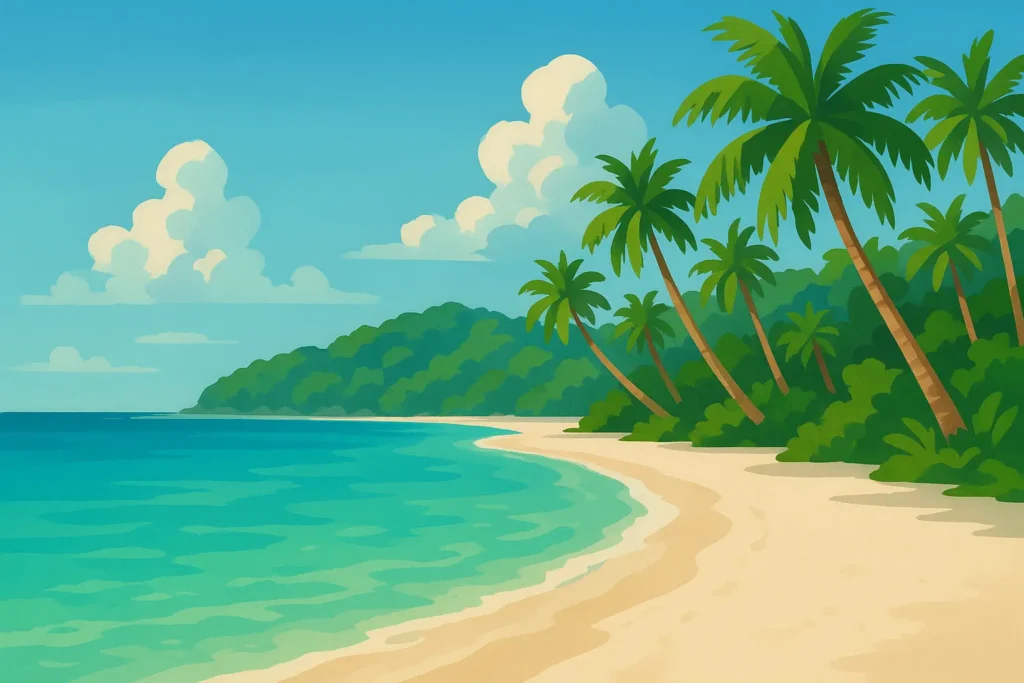
13. Luxury Beach Resort Experience (10 days)
This high-end philippines itinerary focuses on premium accommodations and exclusive experiences. El Nido Resorts’ collection of island properties provides overwater bungalows and private beaches with service that anticipates your needs before you know them.
The all-inclusive approach eliminates planning stress while ensuring consistent luxury standards. Private island transfers, gourmet dining, and exclusive beach access justify the premium pricing if your budget allows.
Boracay’s luxury resorts offer sophisticated amenities while keeping you connected to the island’s famous nightlife when you want it. The combination gives you flexibility for different moods.
Budget $300-500+ per day for this experience, but expect unparalleled service and exclusive access to some of the Philippines’ most beautiful locations. Sometimes you just want to be pampered, and there’s nothing wrong with that.
14. Family-Friendly Beach Adventure (10 days)
This route prioritizes safe swimming conditions and activities that won’t bore the kids or exhaust the parents. Bohol’s Panglao Island offers calm waters perfect for young swimmers, plus dolphin watching tours that actually educate while entertaining.
The tarsier sanctuary gives kids wildlife encounters that fascinate without being scary. These tiny primates look like real-life cartoon characters, and the conservation message resonates with children.
Boracay’s Station 1 and Station 2 areas offer family accommodations and activities. The gradual beach entry creates safe swimming conditions, and there are enough restaurants to satisfy picky eaters of all ages.
Family Activity Schedule in Panglao:
- Morning: Easy snorkeling at Alona Beach (equipment sized for kids available)
- Afternoon: Tarsier sanctuary visit (30 minutes max – perfect for short attention spans)
- Evening: Sunset dolphin watching with dinner included
- All activities include safety equipment and English-speaking guides who are used to working with families
15. Romantic Honeymoon Islands (12 days)
This couples-focused route emphasizes privacy, luxury, and romantic experiences. Private island resorts in Palawan provide ultimate seclusion with overwater bungalows and personalized service designed specifically for romance.
Sunset sailing trips, couples’ spa treatments, and private beach dinners create Instagram-worthy moments that you’ll actually want to experience instead of just photograph. The limestone cliffs and crystal-clear waters provide stunning backdrops for romantic photography.
Boracay’s upscale resorts offer sophisticated amenities while maintaining access to romantic sunset viewing spots. Private beach cabanas let you customize your level of social interaction versus intimate time.
The progression from complete seclusion to gentle social interaction allows couples to find their perfect balance between privacy and entertainment.
Cultural and Historical Deep Dives (5 Itineraries)
These five culturally-focused routes explore the Philippines’ complex history and diverse traditions. From Spanish colonial architecture to indigenous customs that predate European contact, each philippines itinerary provides deep immersion into different aspects of Filipino culture.
Festival timing, traditional crafts, incredible food scenes, and art appreciation form the core of these educational journeys. These routes work particularly well during wet season when outdoor activities get rained out, and they appeal to travelers who want meaningful cultural connections beyond typical tourist attractions.
16. Spanish Colonial Heritage Trail (14 days)
This comprehensive historical journey traces Spanish influence across the archipelago. Manila’s Intramuros district preserves the most complete colonial fortification in Asia, though walking around in tropical heat while learning about 300 years of Spanish rule can be exhausting. The stone churches and museums are genuinely fascinating if you pace yourself.
Vigan’s UNESCO World Heritage status recognizes exceptional preservation of colonial architecture. Those cobblestone streets and ancestral houses create an immersive historical experience, though the horse-drawn carriage tours are touristy but admittedly fun.
Iloilo’s colonial mansions demonstrate Spanish influence in the Visayas region. The heritage district walking tours reveal architectural details and historical significance that casual visitors completely miss.
Cebu’s role as the original Spanish colonial capital provides context for the entire Philippines experience. Magellan’s Cross and Basilica del Santo Niño represent the beginning of Spanish influence and Catholic conversion that still shapes modern Filipino culture.
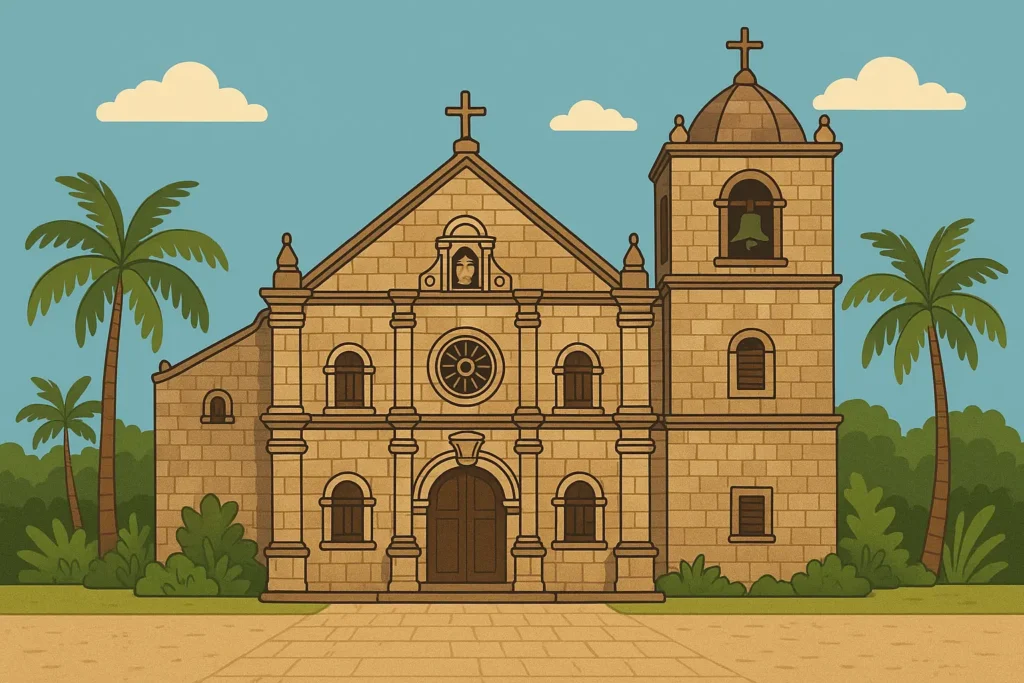
17. Indigenous Culture Immersion (12 days)
This itinerary philippines focuses on pre-colonial Filipino cultures that survive in mountain communities. Banaue’s Ifugao people maintain 2,000-year-old rice terrace systems through traditional farming methods and community cooperation that puts modern agricultural practices to shame.
Homestay experiences provide authentic cultural immersion, though comfort levels vary significantly from Western standards. The terraces represent complex social systems, spiritual beliefs, and environmental harmony that transform sightseeing into genuine education.
Sagada’s Igorot communities preserve traditional burial practices through hanging coffins and cave burials. These customs reflect beliefs about death and afterlife that contrast sharply with Western perspectives, creating thought-provoking cultural exchanges.
Cultural workshops in Manila provide context for understanding how indigenous traditions influence contemporary Filipino society, even in urban environments.
18. Festival and Celebration Circuit (10 days)
This timing-dependent philippines travel itinerary revolves around major Filipino festivals that showcase regional cultures and religious traditions. Ati-Atihan in Aklan celebrates indigenous heritage through elaborate costumes and street dancing that honors pre-colonial traditions while incorporating Catholic elements.
Sinulog in Cebu combines Catholic and indigenous elements in spectacular street parades. The festival demonstrates how Spanish colonization blended with existing beliefs to create unique Filipino religious expressions that exist nowhere else.
MassKara in Bacolod showcases regional identity through colorful masks and community celebrations. Each festival reflects local history, economic conditions, and cultural values specific to its region.
Festival participation requires advance planning because these events draw massive crowds and accommodations fill up fast. But the cultural immersion and community celebration atmosphere provide unparalleled insights into Filipino society.
19. Food and Culinary Adventure (12 days)
This gastronomic journey explores regional cuisines that reflect the Philippines’ complex cultural heritage. Manila’s street food scene provides affordable access to authentic flavors, though start slow unless you want to spend your first day dealing with stomach adjustments.
Cooking classes reveal techniques, ingredients, and cultural significance behind signature dishes. Learning to prepare adobo, sinigang, and regional specialties creates lasting connections to Filipino culture that go way beyond just eating the food.
Iloilo’s culinary traditions demonstrate Visayan influences distinct from Luzon preparations. Local markets provide ingredient education while restaurants showcase regional specialties unavailable elsewhere in the country.
Cebu’s lechon represents the pinnacle of Filipino roasted pork preparation. The city’s reputation for this dish draws food enthusiasts from across the country, making it essential for any culinary-focused traveler.
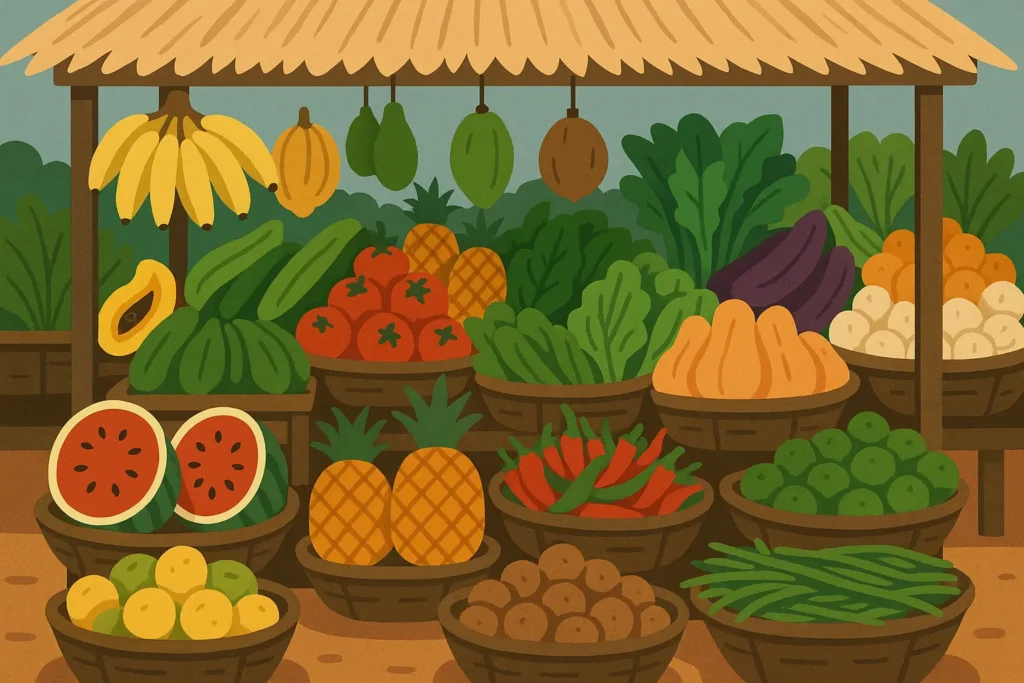
20. Art and Craft Heritage Tour (10 days)
This creative journey explores traditional Filipino arts and contemporary expressions. Manila’s art galleries showcase both historical and modern works that reflect evolving Filipino identity and international influences.
Vigan’s traditional craft workshops demonstrate weaving, pottery, and woodworking techniques passed down through generations. Hands-on experiences allow visitors to create their own pieces while learning cultural significance behind traditional methods.
Cebu’s artisan markets provide access to regional crafts and direct interaction with creators. The combination of traditional techniques and modern designs reflects how Filipino arts adapt while maintaining cultural roots.
The progression from traditional to contemporary art provides comprehensive understanding of Filipino creative expression and its evolution through different historical periods.
Specialized Interest Itineraries (3 Itineraries)
These three specialized routes cater to travelers with specific passions that go beyond general sightseeing. Wildlife photography demands technical skills and patience, wellness retreats focus on spiritual and physical healing, while surfing progression requires wave knowledge and skill development.
These philippines itinerary options appeal to dedicated enthusiasts willing to structure their entire trip around their passion. Each route requires particular expertise, equipment, or mindset that transforms travel from casual tourism into immersive pursuit of personal interests.
21. Wildlife and Nature Photography (14 days)
This photography-focused philippines itinerary targets the country’s unique endemic species and dramatic landscapes. Bohol’s tarsier photography requires patience and specialized equipment for capturing these nocturnal primates without disturbing their natural behavior. Early morning and late afternoon sessions provide optimal lighting conditions, though these tiny creatures don’t always cooperate with your schedule.
The Chocolate Hills offer landscape photography opportunities that change dramatically with lighting conditions and seasons. Sunrise and sunset sessions create different moods and color palettes that showcase the geological formations’ unique characteristics.
Palawan’s underground river provides challenging low-light photography conditions that test your technical skills. The combination of cave formations, wildlife, and unique lighting creates opportunities for dramatic images unavailable elsewhere.
Siargao’s marine life photography includes both underwater and surface opportunities.
Siargao’s marine life photography includes both underwater and surface opportunities. Coral reefs, tropical fish, and dramatic seascapes provide diverse subjects for photographers interested in marine environments.
Photography Equipment Reality Check for Philippines:
- Weather-sealed camera body and lenses (humidity is brutal on electronics)
- Underwater housing for marine photography (rentals available but book ahead)
- Extra batteries (tropical humidity drains power faster than you expect)
- Silica gel packets for moisture control (seriously, bring lots)
- Polarizing filters for water and sky shots
- Macro lens for tarsier and insect photography
22. Wellness and Spiritual Retreat (12 days)
This holistic journey focuses on physical, mental, and spiritual well-being through traditional Filipino healing practices and natural environments. Siquijor’s reputation for mystical healing traditions provides access to traditional healers and spiritual practices rooted in pre-colonial beliefs that might challenge your worldview.
The island’s natural springs, waterfalls, and pristine beaches create environments perfect for meditation and reflection. Local healers offer traditional treatments using indigenous plants and spiritual practices that blend ancient wisdom with natural healing.
Bohol’s yoga retreats combine physical practice with natural beauty. Beachfront sessions at sunrise and sunset enhance the spiritual aspects while providing stunning natural backdrops for your practice.
Natural healing workshops introduce traditional Filipino medicine and wellness practices that you can incorporate into daily life back home. The combination of education and experience creates lasting lifestyle changes.
23. Surfing Progression Journey (14 days)
This surf-focused route provides structured skill development from beginner to advanced levels. La Union’s consistent waves and established surf schools create ideal learning conditions for beginners. The beach break waves offer forgiving conditions while building fundamental skills without intimidating newcomers.
Professional instruction and equipment rental provide safe learning environments. The surf community atmosphere encourages progression while maintaining the fun and social aspects that make surfing culture so appealing.
Siargao represents the Philippines’ premier surfing destination with world-class waves for intermediate to advanced surfers. Cloud 9’s reputation attracts international surfers, creating opportunities to observe and learn from experienced riders.
The island’s variety of breaks accommodates different skill levels and wave preferences. From beginner-friendly spots to challenging reef breaks, Siargao provides comprehensive surfing experiences that match your progression.
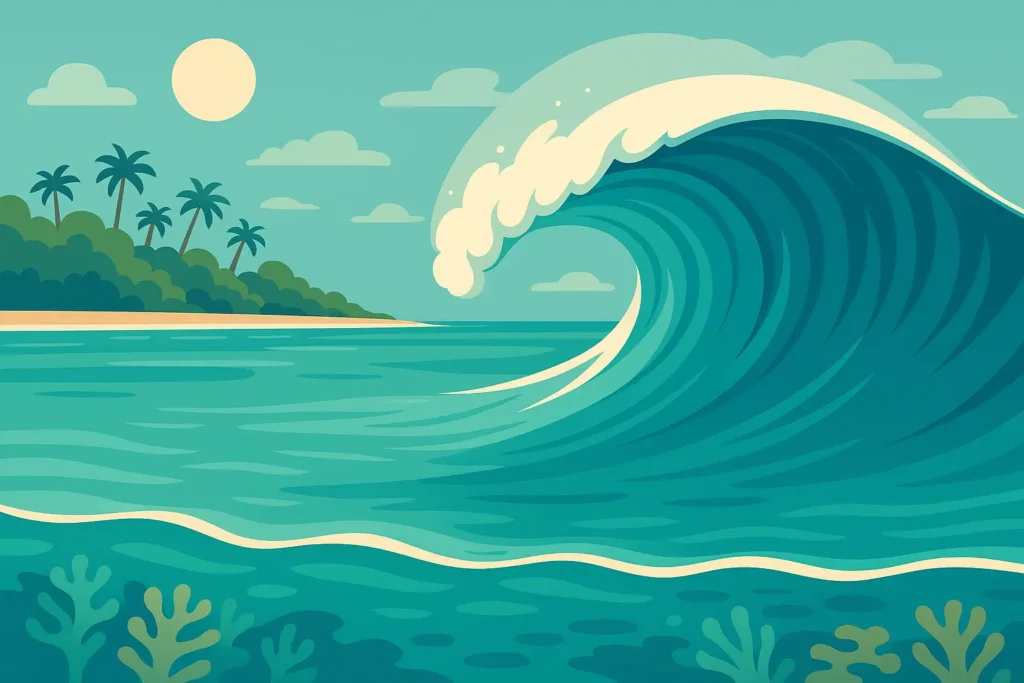
Budget and Backpacker Routes (2 Itineraries)
These two budget-focused routes prove that incredible Philippines experiences don’t require massive budgets. Local transportation, homestays, street food, and hostel accommodations keep costs minimal while providing genuine cultural immersion that higher-budget travelers often miss.
These routes require more time and flexibility but offer deeper connections with local communities and authentic Filipino experiences. The social aspects of backpacker travel create opportunities for meeting fellow travelers and sharing experiences that become part of your adventure story.
24. Shoestring Budget Adventure (14 days)
This ultra-budget philippines itinerary proves you can have amazing experiences without breaking the bank. Manila’s hostel scene provides affordable accommodation and social opportunities for meeting fellow travelers who become part of your adventure.
Overland transportation to Banaue using local buses and jeepneys reduces costs while providing authentic Filipino travel experiences. Yes, it takes longer and comfort levels vary, but you’ll have stories that resort-hoppers never get.
Homestays in rice terrace villages offer cultural immersion at a fraction of hotel costs. You’ll eat with families, learn about daily life, and gain perspectives on Filipino culture that tour groups completely miss.
Local ferry systems enable island hopping without expensive flights. Ferries provide scenic journeys and opportunities to interact with Filipino travelers and workers going about their daily lives.
| Budget Reality Check | Daily Cost | Where You’ll Sleep | How You’ll Get Around | What You’ll Eat |
|---|---|---|---|---|
| Shoestring Survivor | $25-35 | Hostels, homestays | Local buses, ferries | Street food, markets |
| Budget Backpacker | $35-50 | Budget hotels, dorms | Mix of local/tourist transport | Local restaurants |
| Comfort Seeker | $75-150 | Hotels, nice resorts | Domestic flights, private transfers | Restaurant dining |
25. Backpacker Social Circuit (12 days)
This socially-focused route targets destinations with established backpacker communities and hostel scenes. Manila’s backpacker district provides orientation and planning opportunities while connecting with other travelers who share similar budgets and interests.
El Nido’s hostel scene creates natural social opportunities through group activities and shared accommodations. Island hopping tours become more affordable and fun when shared among hostel groups who become temporary travel families.
Boracay’s backpacker scene offers parties and budget activities that provide entertainment without luxury resort costs. The island’s diverse accommodation options allow budget flexibility while maintaining social connections that enhance solo travel experiences.
The progression through established backpacker destinations ensures consistent social opportunities and shared experiences that make solo travel feel less lonely and more adventurous.
Detailed Analysis of Each Itinerary Category
This comprehensive analysis examines how different itinerary categories address varying travel preferences, budgets, and time constraints. Classic routes provide balanced introductions perfect for first-time visitors, while adventure itineraries demand physical fitness and specialized equipment that many travelers underestimate.
Beach routes showcase coastal diversity from luxury resorts to hidden gems, cultural itineraries offer deep historical immersion that transforms casual tourists into informed travelers, specialized routes cater to specific interests, and budget options prove that amazing experiences don’t require trust fund budgets. Understanding these differences helps you select the perfect philippines itinerary for your specific circumstances and travel personality.
Classic First-Timer Routes Analysis
The Manila-Palawan-Boracay Classic represents optimal first-time Philippines experiences by combining urban culture, pristine nature, and world-class beaches. This progression creates a satisfying travel arc that highlights the country’s diversity without overwhelming newcomers who might get decision fatigue from too many options.
Transportation efficiency becomes crucial for these routes. Direct flights between major hubs minimize travel time while maximizing destination experiences. The $1,500-3,000 budget range accommodates various comfort levels while maintaining reasonable value that won’t require eating ramen for months after your trip.
The Golden Triangle maximizes connectivity advantages by utilizing Cebu as a central hub. This strategy reduces transportation complexity while providing access to diverse attractions within manageable timeframes that work for most vacation schedules.
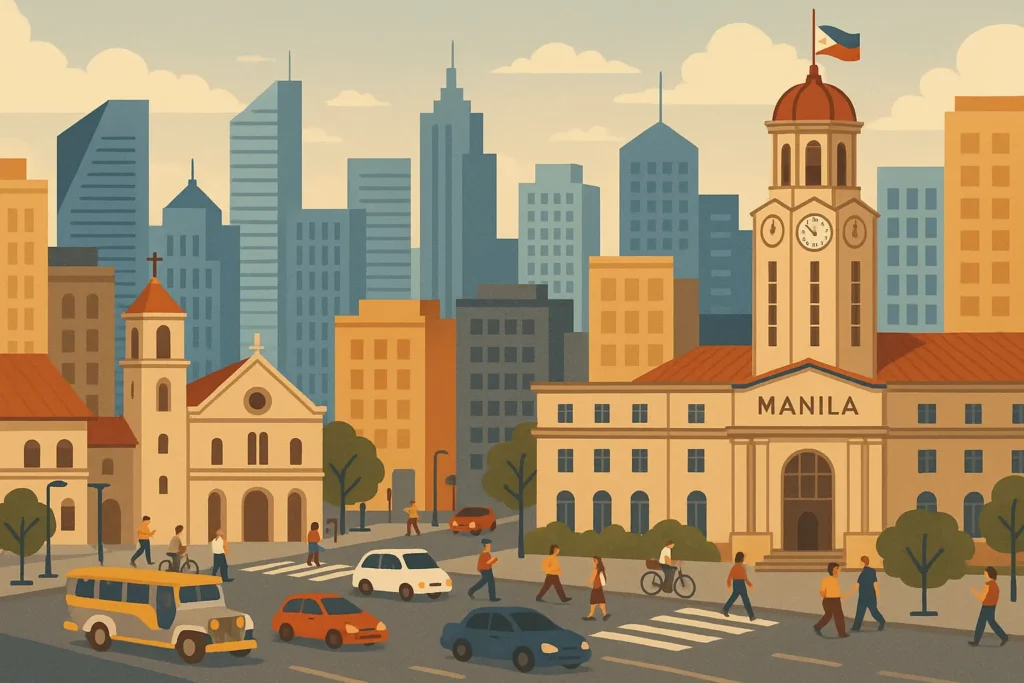
Adventure and Outdoor Activities Analysis
The Ultimate Adventure Philippines demands excellent physical fitness and flexible scheduling that many travelers overestimate. Weather significantly impacts mountain activities, making dry season planning essential for safety and enjoyment rather than just comfort.
Specialized equipment requirements increase costs but ensure safe experiences. Local guides provide essential safety knowledge and cultural context that enhance adventure experiences beyond simple adrenaline rushes that you could get anywhere.
The Diving and Marine Life Specialist route represents the highest-cost adventure option due to liveaboard requirements and specialized equipment needs. However, the Philippines’ world-class diving justifies the investment for serious underwater enthusiasts who understand the value of pristine marine environments.
Beach and Island Paradise Analysis
The Ultimate Beach Hopping showcases coastal diversity while maintaining efficient logistics. Each destination offers unique characteristics that prevent beach fatigue while building comprehensive coastal experiences that satisfy different beach personalities.
Secret Islands routes appeal to travelers seeking authentic experiences without crowds who don’t mind sacrificing some convenience for genuine cultural interactions and pristine environments that haven’t been Instagram-ized yet.
Luxury Beach Resort experiences prioritize comfort and exclusive access over cultural immersion. The premium pricing delivers stress-free experiences perfect for celebration trips or pure relaxation goals when you just want to be pampered.
Applying Key Considerations to Your Perfect Trip
Successfully implementing these itineraries requires understanding how duration, weather, budget, transportation, and personal preferences interact to create optimal travel experiences. Short trips demand focused planning and efficient transportation, while longer journeys allow deeper exploration and spontaneous discoveries that often become the best memories.
Seasonal considerations affect everything from pricing to activity availability, while budget levels determine accommodation quality and transportation methods that impact your entire experience. Hub-based routing optimizes flight connections, while remote destinations require additional time and flexibility that not every traveler can accommodate.
Duration and Time Allocation Strategies
Short itineraries of 7-10 days work best when focusing on highlights with efficient transportation connections. The Manila-Palawan-Boracay Classic exemplifies this approach by connecting major destinations with direct flights and established tourism infrastructure that eliminates guesswork.
These compressed timeframes require advance planning and booking to avoid availability issues that can derail your entire trip. Popular accommodations and activities fill quickly during peak season, making early reservations essential for smooth execution rather than just good prices.
Medium itineraries of 10-14 days provide optimal balance between depth and breadth. The Golden Triangle and Ultimate Adventure routes demonstrate how this duration allows meaningful experiences while maintaining structured progression through diverse destinations without feeling rushed.
Extended philippines itinerary options of 14+ days enable access to remote destinations and deeper cultural immersion that transforms casual tourists into informed travelers. The Spanish Colonial Heritage Trail shows how longer durations permit thorough exploration of specialized interests without feeling like you’re checking boxes.
Seasonal Weather Impact Assessment
Dry season itineraries work universally but command premium pricing during peak months when everyone wants perfect weather. Beach-focused routes perform optimally during December-May with minimal weather disruptions and ideal swimming conditions that justify the higher costs.
However, this period also sees maximum tourist numbers and accommodation costs that can strain budgets. Popular destinations like El Nido and Boracay become crowded, potentially diminishing experience quality despite perfect weather conditions.
Wet season considerations require flexible planning and comprehensive travel insurance for when things go sideways. Mountain and adventure activities become more challenging or impossible during heavy rains, while some diving locations may close due to rough seas that make boat trips dangerous.
Festival timing creates unique opportunities but requires advance planning around specific event calendars. The Festival and Celebration Circuit must align with festival dates, often determining entire trip timing regardless of weather preferences or budget considerations.
Budget Optimization Across Categories
Budget routes like the Shoestring Budget Adventure minimize costs through local transportation, homestays, and street food that provide authentic experiences often missing from higher-budget trips. These approaches require more time and cultural flexibility but offer genuine immersion that money can’t always buy.
The trade-off involves comfort and convenience versus cultural authenticity and cost savings. Budget travelers gain deeper local interactions but sacrifice efficiency and predictability that some travelers need for peace of mind.
Mid-range philippines itinerary options balance comfort with value through strategic choices. Domestic flights for long distances combined with local transportation for short trips optimize both time and money while maintaining reasonable comfort levels that don’t leave you exhausted.
Luxury experiences justify higher costs through exclusive access, premium service, and stress-free logistics. Private transfers, resort accommodations, and guided experiences eliminate planning burden while ensuring consistent quality standards that some travelers require for relaxation.
Transportation Infrastructure Optimization
Hub-based routes utilizing Manila, Cebu, and Puerto Princesa as connection points optimize flight schedules and reduce travel complexity that can overwhelm first-time visitors. The Golden Triangle exemplifies this strategy by using Cebu’s central location for efficient connections.
These major hubs offer frequent domestic flights, international connections, and established ground transportation networks that provide backup options when primary plans fall through. Building itineraries around these centers reduces logistical challenges while maintaining access to diverse destinations.
Remote destination access requires careful planning for locations with limited transportation options. Places like Siquijor or Batad may require multiple transportation modes and significant time investments that work better in longer itineraries with flexible schedules.
Overland options work well in Luzon for budget-conscious travelers willing to invest time in ground transportation that provides cultural experiences unavailable to flyers. The Luzon Highlights Circuit demonstrates effective overland routing that connects cultural destinations efficiently while keeping costs reasonable.
How Bridesmaid for Hire Elevates Your Philippines Wedding Adventure
Planning a destination wedding in the Philippines while managing complex travel logistics for your wedding party creates overwhelming challenges that professional support can solve. Just as choosing the right philippines itinerary requires local knowledge and careful planning, destination weddings demand professional coordination that allows couples to focus on their special day rather than logistics and crisis management.
Bridesmaid for Hire provides specialized destination wedding expertise, cultural navigation, guest management, and 24/7 support that transforms potential stress into seamless celebration experiences. We understand that destination weddings involve unique challenges that go beyond typical wedding planning.
The stunning beaches of Boracay, dramatic limestone cliffs of El Nido, or cultural richness of Vigan could provide perfect backdrops for your special day, but coordinating international weddings while managing travel logistics for your wedding party can feel overwhelming when you’re trying to plan from thousands of miles away.
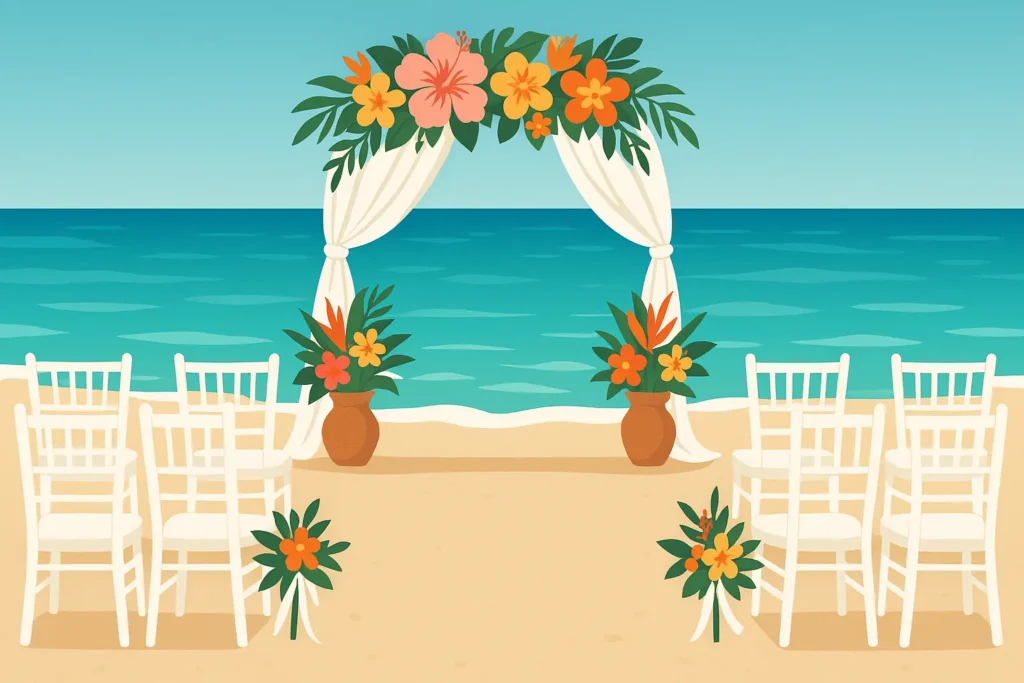
Destination Wedding Expertise and Local Knowledge
Our team understands destination wedding complexities and can coordinate with local vendors, navigate cultural customs, and manage logistics that friends and family back home might not handle effectively. We provide the cultural sensitivity and local knowledge essential for Philippines wedding planning that prevents embarrassing mistakes and ensures respectful celebrations.
Comprehensive Guest Management
Destination weddings involve complex group dynamics, travel stress, and varying comfort levels with international travel. Our professional bridesmaids excel at managing these situations with diplomacy and expertise, ensuring your wedding party focuses on celebration rather than travel complications that can derail the entire experience.
24/7 Professional Support
You’ll have round-the-clock access to professional support throughout your entire wedding planning process and destination wedding experience. From flight delays affecting your wedding party to last-minute vendor issues, our team handles unexpected challenges that might overwhelm friends or family dealing with travel stress and unfamiliar environments.
Seamless Integration and Communication
We blend seamlessly with your existing wedding party or serve as your entire bridal party, allowing your actual friends and family to enjoy the destination experience without traditional bridesmaid pressures. Our professionals bridge communication gaps with local vendors, venues, and service providers, ensuring nothing gets lost in translation or cultural misunderstandings.
Whether you’re planning an intimate beach ceremony in Palawan, cultural celebration in historic Vigan, or luxury resort wedding in Boracay, Bridesmaid for Hire provides the professional support system that transforms destination wedding stress into destination wedding success.
Planning a destination wedding or honeymoon in the Philippines? Make it seamless with our Vacation Planner.
We handle the bridesmaid responsibilities while you focus on creating magical memories in one of the world’s most beautiful destinations. Your Philippines wedding should celebrate love, not manage logistics and drama from halfway around the world.
Final Thoughts
The Philippines offers incredible diversity across its 7,000+ islands, but successful travel requires strategic planning that matches your interests, budget, and time constraints rather than trying to see everything in one impossible trip. These 25 philippines itinerary options provide proven frameworks for experiencing everything from pristine beaches and ancient
The Philippines offers incredible diversity across its 7,000+ islands, but successful travel requires strategic planning that matches your interests, budget, and time constraints rather than trying to see everything in one impossible trip. These 25 philippines itinerary options provide proven frameworks for experiencing everything from pristine beaches and ancient rice terraces to vibrant festivals and world-class diving sites without losing your sanity in the planning process.
Your perfect Philippines adventure depends on honest assessment of your priorities and realistic expectations about what you can accomplish. Adventure seekers will thrive on volcano hikes and cave exploration, while culture enthusiasts find deep satisfaction in colonial heritage trails and indigenous community visits that provide genuine education. Beach lovers can choose between luxury resort experiences and hidden island discoveries, while budget travelers prove that amazing experiences don’t require trust fund budgets or sacrificing authenticity.
Weather timing significantly impacts your experience, with dry season offering perfect conditions but higher costs and crowds that might diminish the experience quality. Wet season provides opportunities for lower prices and authentic experiences, though flexibility becomes essential for weather-related changes that can disrupt carefully planned itineraries.
Transportation planning makes or breaks philippines itinerary success more than any other single factor. Hub-based routing through Manila, Cebu, and Puerto Princesa optimizes connections and reduces travel time, while remote destinations reward patient travelers with unique experiences unavailable elsewhere but require significant time investments.
Most importantly, these itineraries serve as starting points rather than rigid requirements that must be followed exactly. The Philippines rewards spontaneous discoveries and cultural connections that can’t be planned in advance but often become the most memorable parts of your trip.
Look, I could keep planning your trip for you, but honestly? Some of my best Philippines memories came from completely unplanned moments. Use these itineraries as your safety net, but don’t be afraid to say ‘screw it’ and hop on that random boat to an island you’ve never heard of.
The archipelago’s magic lies in its ability to surprise and delight visitors who approach it with open minds and flexible spirits. Whether you follow these philippines itinerary suggestions exactly or use them as inspiration for your own unique adventure, the Philippines will exceed your expectations and leave you planning your return visit before you’ve even left.
Start turning your island-hopping dreams into reality — design your personalized Philippines itinerary today with our Vacation Planner
The Philippines isn’t always easy travel – flights get delayed, ferries break down, and sometimes the WiFi just doesn’t work. But that’s also part of what makes it an adventure instead of just another beach vacation that you’ll forget in six months.
1-800-BRIDESMAID
The Newlywed
Card Game
something extra to love
Read the weekly newsletter from Bridesmaid for Hire, 1-800-Bridesmaid, to hear about real stories, from strangers, who need advice on love, life, friendship, and so much more.
Looking for the perfect wedding gift for someone you adore? Grab The Newlywed Card Game. It's a fun and interactive game they can play on their honeymoon or future date nights.
